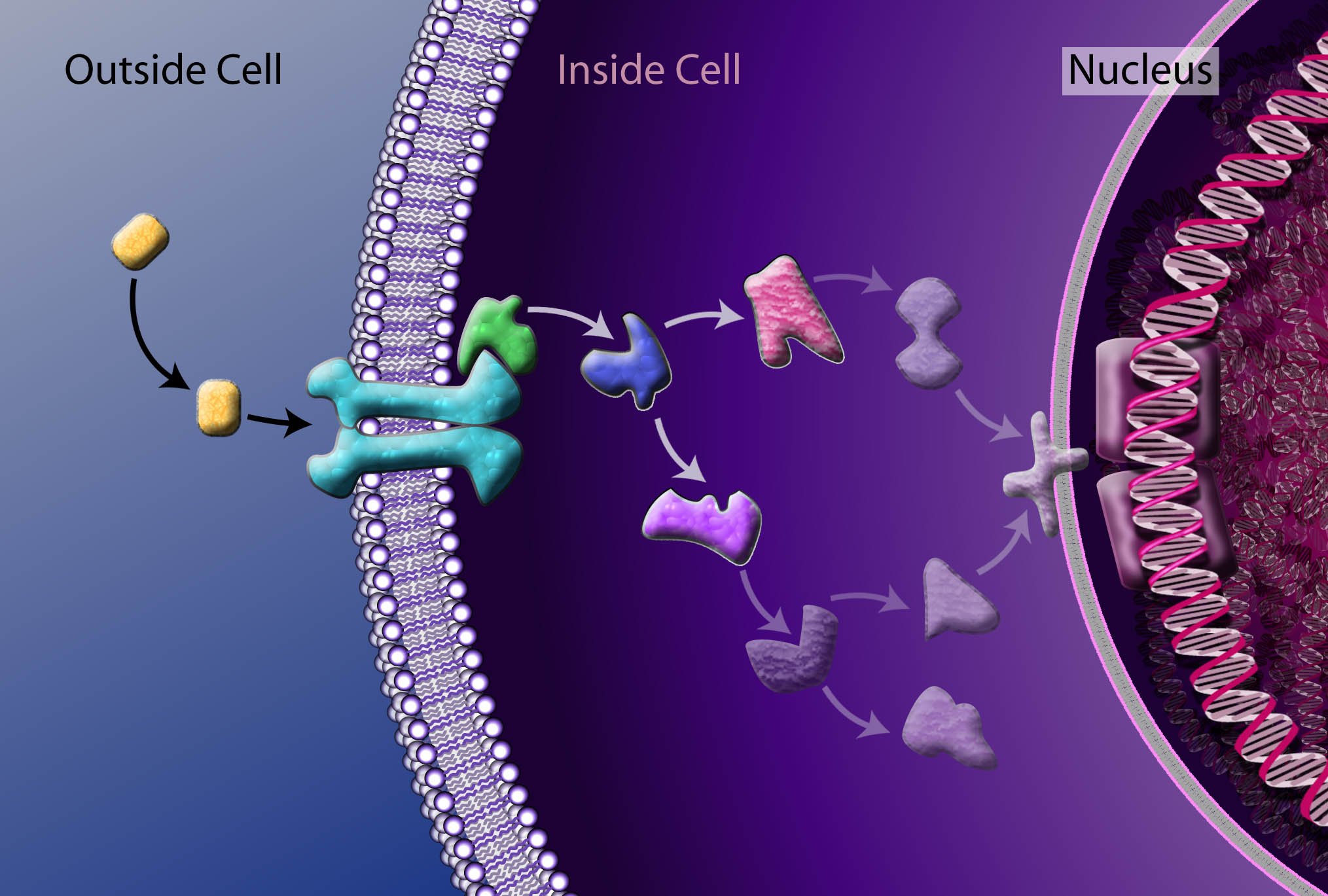Using cells’ chemical signaling to control cancer or detect toxins
November 17, 2011

Cells receive external signals (depicted in yellow) through sensing molecules (receptors --- depicted in aqua) embedded in the cell membrane. These in turn start a cascade of signaling molecules that carry the signals to the nucleus or other internal structures in the cell. The new research shows the speed or other characteristics of this signaling process can change when the signals are being received. (Credit: NSF)
MIT researchers have found that cells’ chemical signaling mechanisms can tell whether their signals are being received, and then adjust the volume of their messages as needed.
Cells use these chemical signaling systems to control many basic functions. For example, signaling can control how genes are turned on and off in response to external or internal cues, how cells grow and organize their internal structures, and even how and when cells trigger their own death, a process known as apoptosis.
The new finding could be useful for everything from synthetic biology to slowing the spread of cancer cells, or to engineer cells that can respond — perhaps by changing color — to certain disease-causing substances or toxins, thus producing very sensitive biologically based detectors.
Ref.: Jiang et al., Load-Induced Modulation of Signal Transduction Networks, Science Signaling, 2011 [DOI: 10.1126/scisignal.2002152]